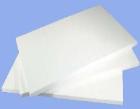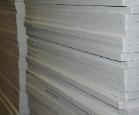Skyline Components supplies two kinds of ceramic fiber boards.
Standard ceramic fiber board is made of aluminum silicate ceramic fibers
with a small amount of organic binders. Bio-soluble board is made of
calcium/magnesium silicate fibers with a small amount of organic
binders. The former board has lower cost. The later board meets
European regulatory requirements (Directive 97/69/EC) due to its
enhanced biosolubility. Both boards have good thermal insulation and
light weight. They can be easily cut any shape to be installed in furnaces,
ovens and stoves as thermal and electrical insulation materials. The
binders will burn off at high temperature.
Characteristics
Standard ceramic fiber board is made of aluminum silicate ceramic fibers
with a small amount of organic binders. Bio-soluble board is made of
calcium/magnesium silicate fibers with a small amount of organic
binders. The former board has lower cost. The later board meets
European regulatory requirements (Directive 97/69/EC) due to its
enhanced biosolubility. Both boards have good thermal insulation and
light weight. They can be easily cut any shape to be installed in furnaces,
ovens and stoves as thermal and electrical insulation materials. The
binders will burn off at high temperature.
Characteristics
- Low thermal conductivity
- Excellent thermal stability
- Excellent sound absorption
- Thermal shock resistance
- Excellent corrosion resistance
- White color, and lightweight
- Easy to cut, machinable
| Ceramic Fiber Board |
| |||||||||||||||||||||||||||||||||||||||||||||||||||||||||||||||||||||||||||||||||||||||||||||||||||||||||||||
Specification for Standard Ceramic Fiber Board
Ceramic Fiber Board Handling
|
|
Specification for Bio-Soluble Ceramic Fiber Board

Skyline Components, LLC
|

